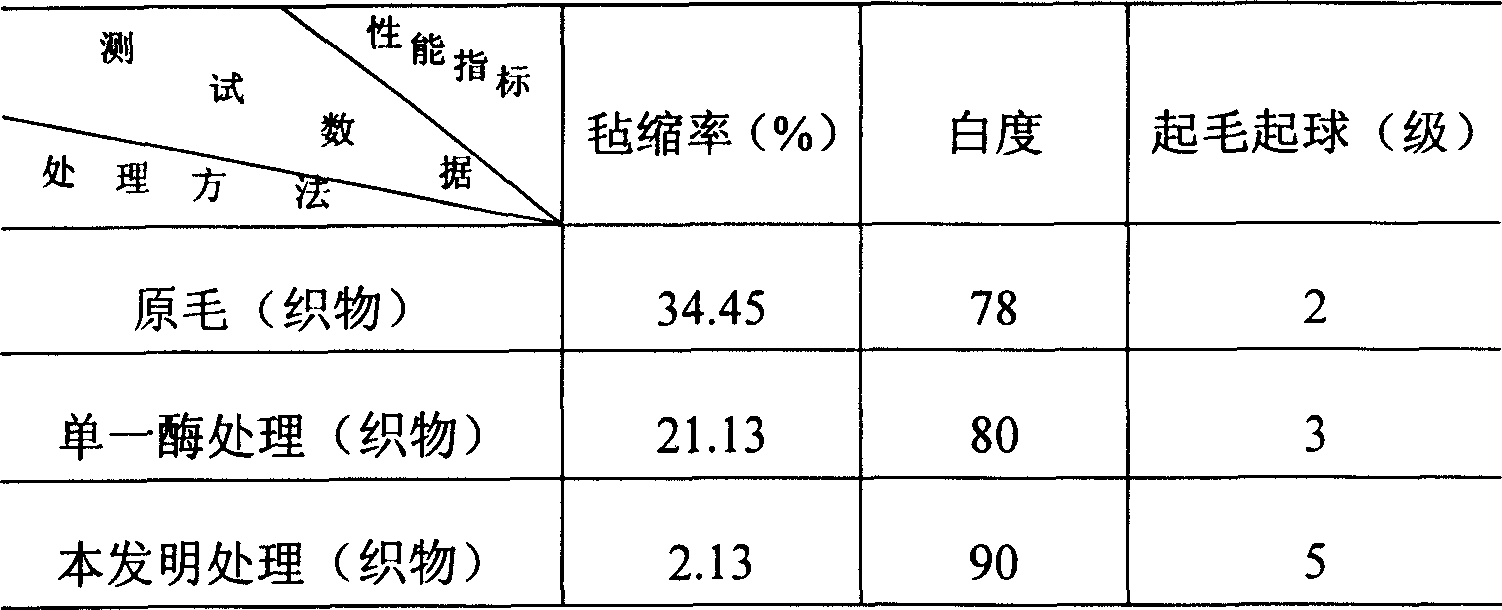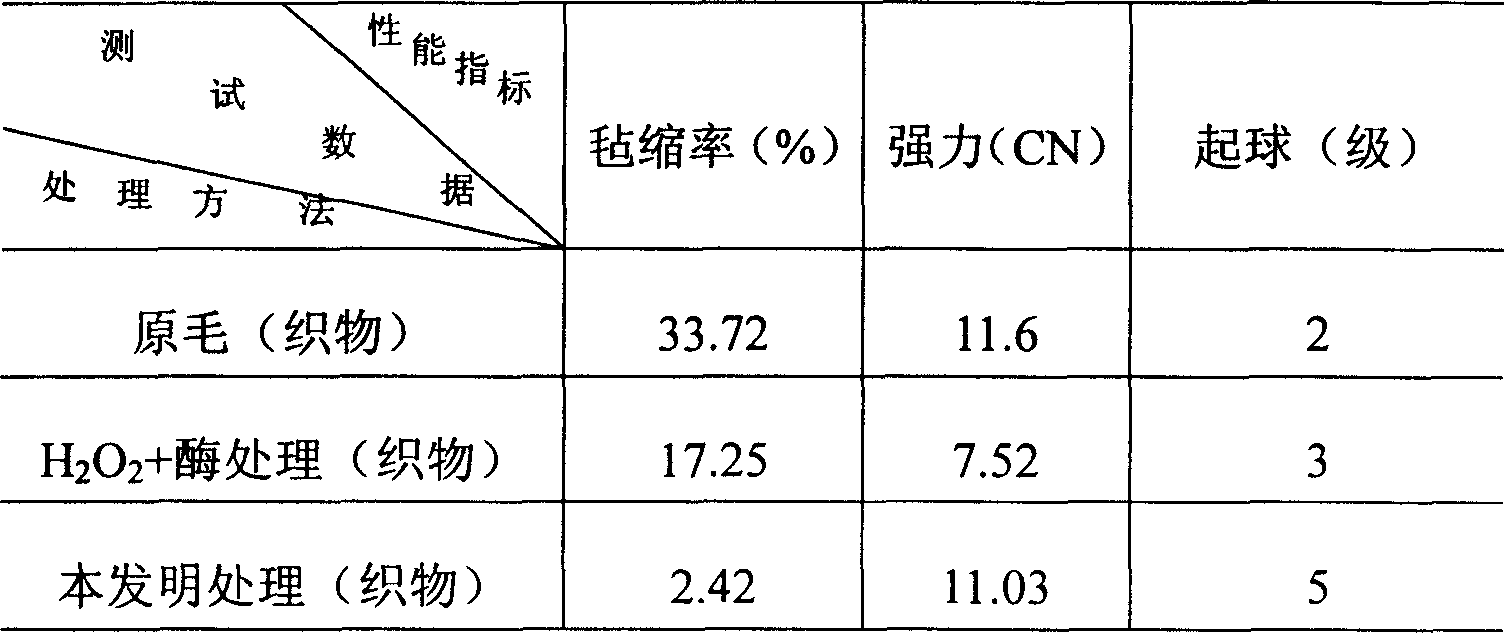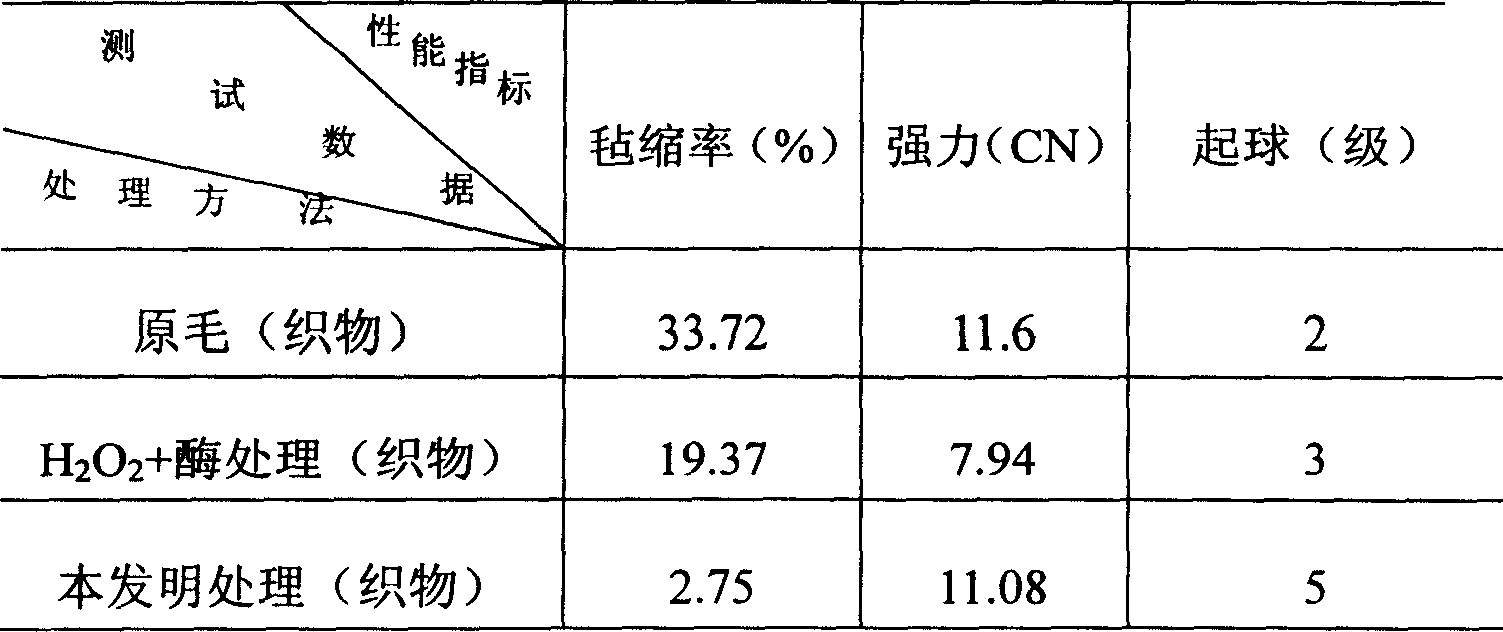Finishing method for preventing felting and shrinking of wood fabric
An anti-felting and wool technology, applied in fiber treatment, biochemical fiber treatment, textiles and papermaking, etc., can solve the problems of increasing wool fiber damage, failing to achieve the purpose of anti-felting, cumbersome treatment process, etc., to protect wool The effect of internal structure, reducing forward and reverse friction effect, and simplifying the processing process
- Summary
- Abstract
- Description
- Claims
- Application Information
AI Technical Summary
Problems solved by technology
Method used
Image
Examples
example 1
[0018] Example 1: All wool yarn Specification: 66 s Australian wool, spun into 52 counts / 2 ply yarns.
[0019] Put 20kg of the pre-washed woolen yarn in a washing machine with 240 liters of chitosan aqueous solution (containing 0.96kg of chitosan). Carry out enzymolysis treatment in the enzyme solution of the washing machine for 50 minutes, the enzyme solution contains 1.2kg neutral protease and 0.6kg neutral lipase, the temperature is 55°C, the bath ratio is 11:1, and intermittent stirring; after the treatment, the wool yarn is taken out and used Rinse in hot water at 90°C for 15 minutes; finally use 0.5kg of softener for softening treatment, and weave after dehydration. The test results are shown in Table 1.
[0020] Table 1
[0021]
example 2
[0022] Example 2: All wool wool yarn Specification: 60 s National wool tops, spun into 26 counts / 2 strands of yarn.
[0023] Put 20kg of the pre-washed woolen yarn in the washing machine, which contains 200 liters of chitosan aqueous solution (containing 0.6kg chitosan), stir and infiltrate intermittently at 50°C for 20 minutes; take it out and wash it once; then put the woolen yarn into the washing machine Enzyme hydrolysis in the enzymatic solution for 60 minutes, the enzyme solution contains 1.0kg neutral protease and 0.5kg neutral lipase, the temperature is 45°C, the bath ratio is 10:1, stirring intermittently; the wool yarn after enzymolysis is heated by an 85°C hot water machine Wash for 15 minutes with a bath ratio of 8:1; finally use 0.4kg of softener for softening treatment, and weave after dehydration. The test results are shown in Table 2.
[0024] Table 2
[0025]
example 3
[0026] Example 3: Wool and acrylic blended yarn specifications: the wool / acrylic ratio is 7 / 3, and it is spun into 36 / 2 strands of yarn.
[0027] Put 20kg of the pre-washed woolen yarn in the washing machine, which contains 160 liters of chitosan aqueous solution (containing 0.4kg chitosan), stir and infiltrate intermittently at 42°C for 20 minutes; take it out and wash it once; then put the woolen yarn into the washing machine Enzyme hydrolysis in the enzyme solution for 40min, the enzyme solution contains 0.6kg neutral protease and 0.4kg neutral lipase, the temperature is 50 ℃, bath ratio 10:1, stirring intermittently; Wash for 20 minutes with a bath ratio of 9:1; finally use 0.3kg of softener for softening treatment, and weave after dehydration. The test results are shown in Table 3.
[0028] table 3
[0029]
PUM
 Login to View More
Login to View More Abstract
Description
Claims
Application Information
 Login to View More
Login to View More - R&D
- Intellectual Property
- Life Sciences
- Materials
- Tech Scout
- Unparalleled Data Quality
- Higher Quality Content
- 60% Fewer Hallucinations
Browse by: Latest US Patents, China's latest patents, Technical Efficacy Thesaurus, Application Domain, Technology Topic, Popular Technical Reports.
© 2025 PatSnap. All rights reserved.Legal|Privacy policy|Modern Slavery Act Transparency Statement|Sitemap|About US| Contact US: help@patsnap.com



